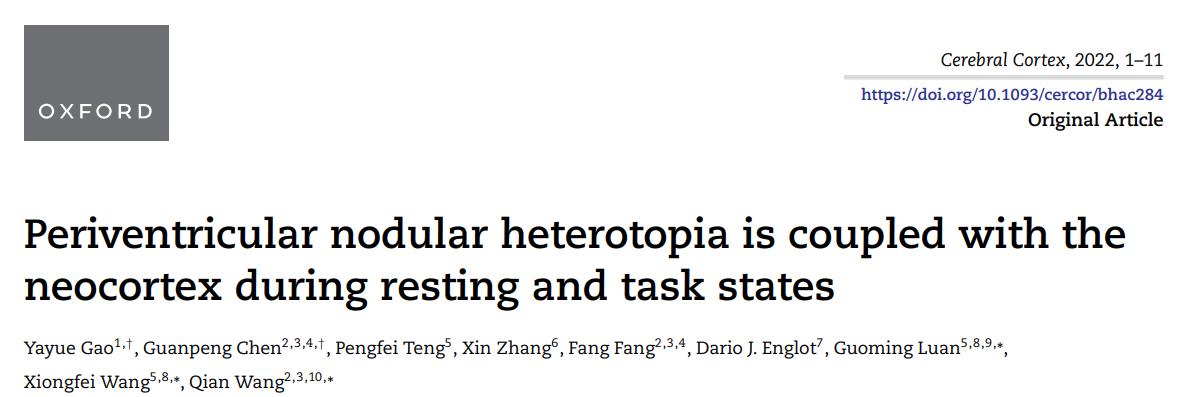Dr. Qian Wang: Periventricular nodular heterotopia is coupled with the neocortex during resting and task states

Abstract
Periventricular nodular heterotopia (PVNH) is a well-defined developmental disorder characterized by failed neuronal migration, which forms ectopic neuronal nodules along the ventricular walls. Previous studies mainly focus on clinical symptoms caused by the PVNH tissue, such as seizures. However, little is known about whether and how neurons in the PVNH tissue functionally communicate with neurons in the neocortex. To probe this, we applied magnetoencephalography (MEG) and stereo-electroencephalography (sEEG) recordings to patients with PVNH during resting and task states. By estimating frequency-resolved phase coupling strength of the source-reconstructed neural activities, we found that the PVNH tissue was spontaneously coupled with the neocortex in the α–β frequency range, which was consistent with the synchronization pattern within the neocortical network. Furthermore, the coupling strength between PVNH and sensory areas effectively modulated the local neural activity in sensory areas. In both MEG and sEEG visual experiments, the PVNH tissue exhibited visual-evoked responses, with a similar pattern and latency as the ipsilateral visual cortex. These findings demonstrate that PVNH is functionally integrated into cognition-related cortical circuits, suggesting a co-development perspective of ectopic neurons after their migration failure.
Original link: https://doi.org/10.1093/cercor/bhac28